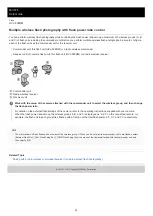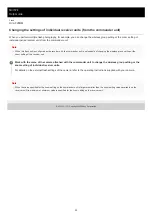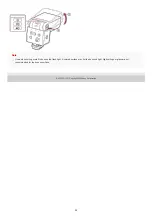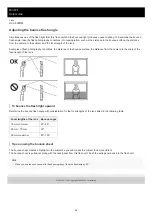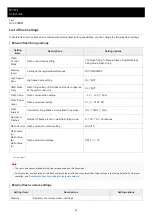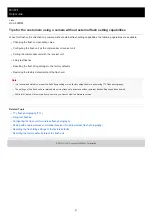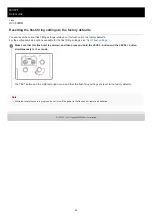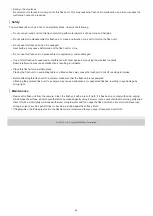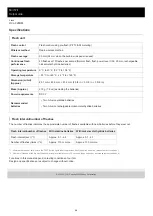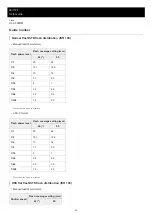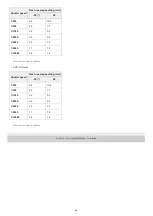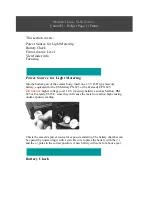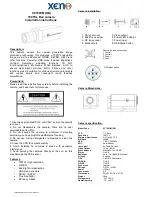
Flash
HVL-F28RM
Notes on use
In addition to this Help Guide, please read “Notes on use” in the Startup Guide (supplied).
While photographing
This flash unit generates strong light, so it should not be used directly in front of the eyes.
Do not fire more than 20 consecutive flashes (40 consecutive flashes when the flash power level is 1/32) to prevent heat
build-up and degradation of this flash unit and its batteries.
When the flash unit has fired the maximum number of flashes, stop using the flash unit and let it cool down for 20 minutes or
longer.
During wireless photography, this flash unit may fire flashes unexpectedly because it is unable to receive communication
signals from an off-camera flash for locational reasons. In such a case, change the location of the off-camera flash or the
wireless channel setting.
Do not put this flash unit with the camera attached in a bag, etc. It may result in malfunctions of the flash unit or the camera.
Do not carry around this flash unit with the camera attached. It will result in malfunctions.
Keep the flashlamp away from a human body when tilting it up for bounce flash photography to prevent eye damage or skin
burns.
When tilting up or down the flashlamp, keep your fingers off the tilt part to prevent injuries.
When closing the battery chamber door, hold it firmly down while sliding it fully across.
While closing the battery chamber door, be careful not to injure your fingers by being caught by the door.
Batteries
Depending on the storage temperature or conditions, the remaining battery power of the alkaline batteries may be detected
lower than the actual one and the TEST button on this flash unit may flash in orange. If you keep using the flash unit for a
while longer, it may correctly detect the remaining battery power.
When the rechargeable nickel-metal hydride batteries are running out of power, the performance of this flash unit drastically
deteriorates. This may cause the flash unit to suddenly stop operating shortly or immediately after the TEST button starts
flashing in orange.
Do not use lithium-ion batteries in this flash unit as they may prevent the flash unit from delivering full performance.
Depending on the time elapsed since manufacture of the batteries, the flash interval and the number of flashes may vary from
the values shown in the Specifications table even when this flash unit has brand new batteries inside.
Before removing the batteries for replacement, make sure you turn off the power to this flash unit and let it cool down for a few
minutes. Depending on the battery type, the batteries inside the flash unit may have built up heat. Take sufficient care when
you remove the batteries.
Remove and store the batteries when you do not intend to use this flash unit for an extended period of time.
Temperature
The flash unit should only be used within the temperature range of 0 °C to 40 °C (32 °F to 104 °F).
Do not expose the flash unit to extremely high temperatures (e.g. direct sunlight inside a vehicle) or high humidity.
To prevent condensation from forming inside this flash unit, put the flash unit in a sealed plastic bag when bringing it from a
cold environment into a warm environment. Let it warm up to the ambient temperature before taking it out of the bag.
Battery capacity decreases at colder temperatures. When using this flash unit in a cold environment, keep in mind that you
should use new batteries or replace the batteries, from time to time, with the spare batteries that are kept warm. In a cold
environment, the TEST button on the flash unit may temporarily flashes in orange even when there is some power left in the
batteries.
Batteries regain some of their capacity when warmed to normal operating temperatures.
Places to avoid for use/storage
Extremely hot, cold or humid places
In places such as in a car parked in the sun, this flash unit may become deformed and this may cause a malfunction.
Places subject to direct sunlight or near a heat source (for storage)
This flash unit may become discolored or deformed, and this may cause a malfunction.
Places subject to significant vibration
Places near a strong magnetic field
44

